Robert Indiana at Yorkshire Sculpture Park - more than just Love
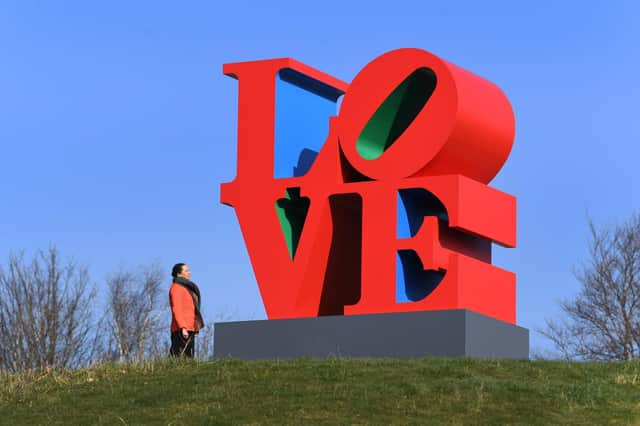

As you enter the Yorkshire Sculpture Park you are greeted by Robert Indiana’s iconic LOVE (Red Blue Green) sculpture.
It is usually shown in an urban context, but here it is set within the stunning Yorkshire countryside.
Advertisement
Hide AdAdvertisement
Hide AdBut this is just one of 56 pieces of his work being shown at the Yorkshire Sculpture Park in an exhibition running until January next year. Robert Indiana: Sculpture 1958-2018 traces the development of sculpture across six decades. “It’s a unique opportunity to see Indiana’s work, not only in the UK but in the setting of the Yorkshire Sculpture Park,” explains assistant curator Louise Lohr.
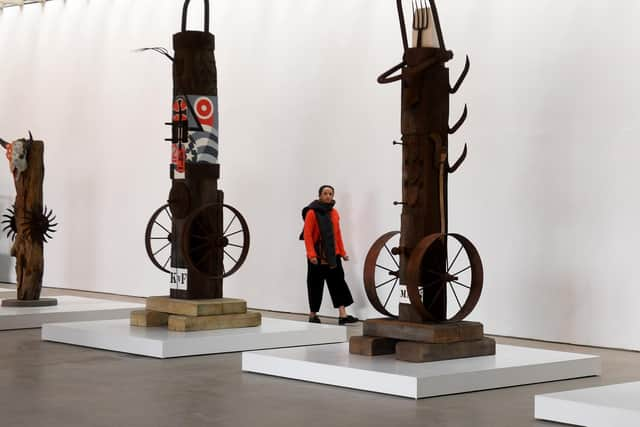

“Many have been seen in city centre settings but here they have the backdrop of the Yorkshire landscape that makes them even more beautiful.”
It is something of a coup to have so many of Indiana’s works spanning six decades in Yorkshire at anyone time. Installation of the exhibition, which opened to the public last week, started back in January and it runs until January next year.
“It’s an amazing opportunity to see the breadth of his work which has had very limited exposure in Europe and the UK. Most people know Indiana for LOVE but this exhibition is really important for us to explore his other pieces and how his sculptures developed over 60 years. Although we can’t ignore LOVE which is why it has such a prominent location in the Yorkshire Sculpture Park.”
Advertisement
Hide AdAdvertisement
Hide AdIndiana first used the word ‘love’ in a painting in 1961. In 1964 he began a series of LOVE paintings which used the slanted ‘O’ within a square format. Indiana said that this was “the most dynamic way to use four letters”.
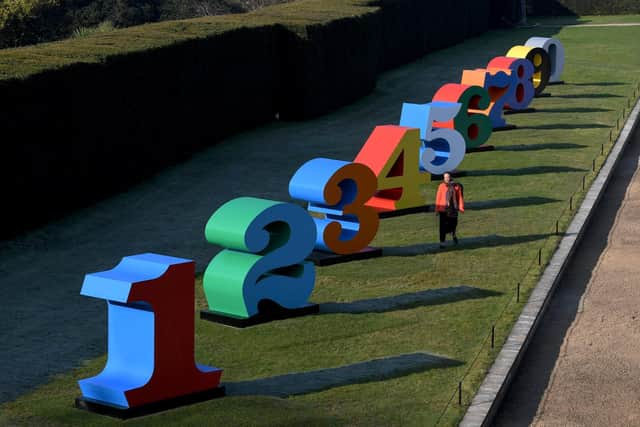

The sculpture of LOVE was first made in 1966, using aluminium. The LOVE sculptures still hold a close relation to the two-dimensional letters.
The unique nature of the Yorkshire Sculpture Park means that works from the same artist can be shown in the indoor gallery spaces and also in the 500 acres parkland of Bretton Hall near Wakefield.
“Particularly with the major exhibitions we hold them in the Underground Gallery and like in this case use the lawn in front of the gallery as well,” says Lohr. Indiana’s huge colourful number ONE Through ZERO (The Ten Numbers) (1980–2001) occupy the lawn in front the of the Underground Gallery. Indiana was born Robert Clarke in Newcastle, Indiana in 1928. He was a painter, sculptor, and printmaker, frequently associated with Pop Art, though he has said he preferred calling himself a “sign painter.
He died in 2018 aged 89.
Advertisement
Hide AdAdvertisement
Hide Ad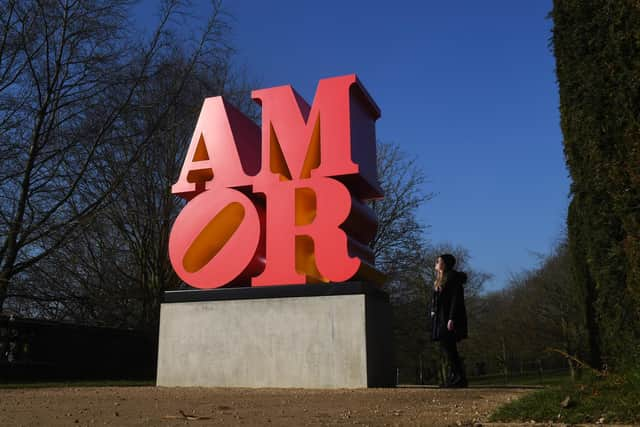

He was an advocate for many human rights issues, and central to the exhibition are his important social justice works. A lot of his work considers his view of the darker side of the American dream at a time of vast social and political change. Unity, acceptance and love are themes that run throughout his work .These remain relevant today for movements against racism and discrimination towards LGBTQIA+ communities.
“We have already had lots of questions with people about the current situation and how works like Indiana’s can really help people at times like this,” says Lohr of the current crisis in Ukraine. “Indiana was making works about problems of his time but these issues haven’t gone away. It is striking how contemporary his works appear.”
Mississippi (1965), from the artist’s Confederacy series, was a controversial response to racist atrocities committed against the United States Civil Rights movement of the 1950s and 60s, harking back to the 1861-65 American Civil War, with its formation of the pro-slavery and white supremacist Confederate States.
Love Rising (The Black and White Love) (1968) was made in the aftermath of the assassination of Dr Martin Luther King Jr., and Ash (1985), from Indiana’s Vinalhaven Construction series, references the gay community’s response to the AIDS crisis of the 1980s.
Advertisement
Hide AdAdvertisement
Hide Ad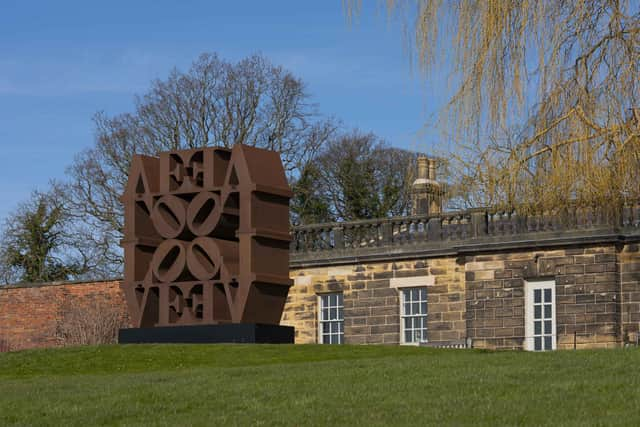

Beginning with Indiana’s earliest relief and collage forms, which incorporate found objects and remnants of industry taken from derelict warehouses near to his studio, the exhibition unfolds across Indiana’s series of sculptures made for both indoors and outdoors.
One of the earliest works in the exhibition, The Melville Triptych references Coenties Slip, the street in Manhattan where Indiana lived from 1956 amid a community of notable artists, including Ellsworth Kelly, Agnes Martin and Cy Twombly, before he moved in 1978 to Vinalhaven, an island off the coast of Maine.
Although away from the New York art scene, Indiana continued to create works in his home and studio, Star of Hope, which is now under the supervision of a foundation he created.
Striking groups of columns and Indiana’s take on herms (representations of the torso without arms or legs on a column) are displayed across three gallery spaces, including early wooden constructions as well as later bronze casts.
Advertisement
Hide AdAdvertisement
Hide AdVarying in size from just over one metre to 3.5 metres tall, these sculptures were created using salvaged materials from the demolished industrial buildings surrounding the artist’s studio.
Indiana studied typography while he was a student at the University of Edinburgh and the use of words and numbers became central to his artistic practice, particularly the exploration of their physical form.
He first used words on his early wooden herms, with the choice of word being dictated in part by the space in which the artist intended it to fit.
He sought to use words that summarised a theme or feeling in the most direct way, for example, ‘eat’ to represent ‘life’ and ‘die’ to represent ‘death’.
Advertisement
Hide AdAdvertisement
Hide AdIndiana’s brightly coloured, six-foot-high aluminium sculptures ONE Through ZERO (The Ten Numbers) (1980–2001) is placed on the lawn outside the Underground Gallery.
Blending painting and sculpture, the Numbers represent the stages of human life, from birth to death. Indiana’s fascination with numbers stemmed from an acute awareness of how they are connected to everything we do and how they are understood across many languages.
“Numbers fill my life,” he stated. “They fill my life even more than love. We are immersed in numbers from the moment we’re born.”
Robert Indiana: Sculpture 1958–2018 runs at the Yorkshire Sculpture Park until Jan 8, 2023
For more information visit https://ysp.org.uk/